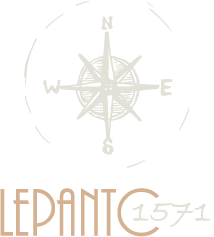
The climax of tension in the Mediterranean in the 1560s
In the 1560s the Ottomans were at the peak of their power and they controlled, either directly or through the corsairs who worked for them, the largest part of the Mediterranean. Hence sea transportation and communication was dangerous for those who had not a treaty with them. In 1564, according to the French priest Maurand, the Ottoman fleet almost 'conquered' the French city of Toulon, but left after pillaging large part of the city. In 1565 the attempt of the Ottomans to conquer Malta failed, but in the next three years Kapudan Pasha Piyale Pasha managed to conquer Chios (1566), Naxos and Andros (1567). Venice was justified to fear for her possessions in Cyprus and Crete. Hence it concluded a peace treaty with the Ottomans in 1567, paying the heavy annual tribute of 150.000 ducats. The famine and the pest (1567-68) and the fire (1569) which hit Istanbul made the war seem a faraway plan...Meanwhile, Spain was trying to enlarge its fleet, but it had to face the revolt of the Moors, which was openly supported by the High Porte. Of much higher consequences was the revolution in the Netherlands, where the spectrum of Protestantism brought shivers not only to the Hapsburgs but also to Pope Pius V.
On March 25th 1570 the High Porte sent an ultimatum to Venice demanding the surrender of Cyprus. The Venetians, who had meanwhile managed to win over the Pope and Philip II, refused, hoping that the resurrection of the Holy League, which the Pope preached for, would be victorious once more. The Ottoman fleet set off from Istanbul in mid-May, under the leadership of the Kapudan Pasha Muezzinzade Ali Pasha and Lala Mustafa Pasha, commander general of the land forces. At the end of July started the siege of Nicosia, the castle of which, recently concluded, was a model of defense architecture. The defender of the city, Niccolo Dandolo, refused to capitulate. When the city finally fell on the 9th of September, the head of Dandolo was sent to Marcantonio Bragandino, commander in charge of Famagusta, the last standing Venetian fort of Cyprus. It was meant to bring him to his senses. However, the latter heroically refused to capitulate and the land forces of the Ottomans headed to Famagusta, who resisted for about a year, thus giving time to the -admittedly very slow- processes for the consolidation and mobilization of the Holy League. When the Western powers managed finally to reach an agreement and seal the foundation of their league with spectacular ceremonies in the Consistorio of the Vatican, it was already mid-July. At the beginning of August Famagusta fell and Bragadin died a horrible death, but it would take at least three more weeks before the news reached the Christian powers who had meanwhile gathered at Messina.

